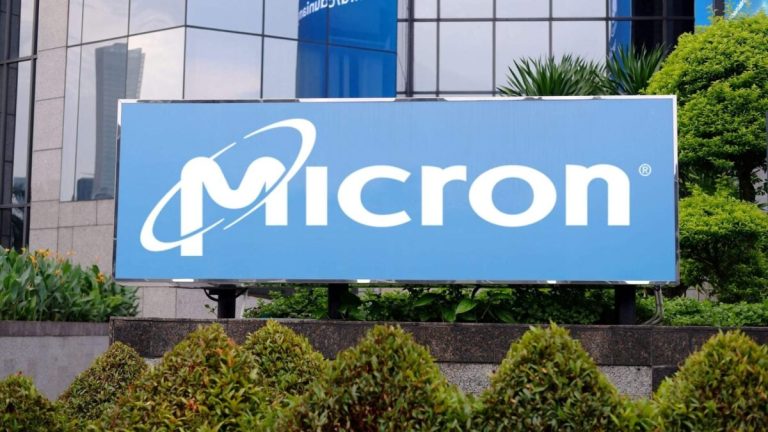
The transportation industry is undergoing a significant revolution, driven by rapid advancements in technology. From self-driving cars to electric scooters and hyperloop systems, technology is reshaping the way we move people and goods. This article explores the various innovations and technologies that are transforming transportation, making it more efficient, sustainable, and connected than ever before.
Key Takeaways
- Electric vehicles are leading the charge towards sustainable transportation through advancements in battery technology and a growing charging infrastructure.
- Autonomous vehicles are set to redefine road travel, though they face significant safety and regulatory challenges.
- Hyperloop systems promise high-speed travel with ongoing projects and developments aimed at overcoming potential challenges.
- Urban air mobility is emerging as a new frontier in transportation, with various types of air vehicles and integration challenges to be addressed.
- Smart traffic management systems, powered by AI and IoT, are enhancing urban mobility and offering benefits for both commuters and the environment.
Electric Vehicles: Driving Towards a Sustainable Future
Electric vehicles (EVs) are revolutionizing the transportation industry, marking a significant step towards a more sustainable future. Major automotive companies are investing heavily in electric car technology, leading to the development of more affordable and efficient electric vehicles. With advancements in battery technology, EVs are offering longer ranges and faster charging times, making them a viable option for daily commuters. Additionally, cities around the world are investing in charging infrastructure, encouraging the adoption of EVs.
Advancements in Battery Technology
Advancements in battery technology have been pivotal in the rise of electric vehicles. Modern batteries are not only more efficient but also more affordable, making EVs accessible to a broader audience. Innovations such as solid-state batteries promise even greater energy density and faster charging times.
Building a Robust Charging Infrastructure
A robust charging infrastructure is essential for the widespread adoption of electric vehicles. Governments and private companies are collaborating to install charging stations in urban and rural areas. This day emphasizes the role of EVs in reducing greenhouse gas emissions and combating climate change, fostering collaboration, innovation, and public awareness.
Government Policies and Incentives
Government policies and incentives play a crucial role in promoting electric vehicles. Many countries offer tax breaks, rebates, and other incentives to encourage consumers to switch to EVs. These policies are designed to reduce the initial cost of EVs and make them more competitive with traditional internal combustion engine vehicles.
The rise of electric vehicles marks a significant step towards a more sustainable future. Major automotive companies are investing heavily in electric car technology, leading to the development of more affordable and efficient electric vehicles.
Autonomous Vehicles: Redefining Road Travel
Autonomous vehicles, or self-driving cars, have the potential to transform the way we commute. These vehicles use advanced sensors, cameras, and artificial intelligence to navigate without human input. Companies like Tesla, Waymo, and Uber are leading the way in autonomous vehicle technology. As self-driving cars become more sophisticated and reliable, they have the potential to enhance road safety, reduce traffic congestion, and provide mobility solutions for individuals with limited mobility.
The landscape of modern mobility is rapidly evolving, steering us toward a future where vehicles are not just modes of transport but intelligent, connected ecosystems. Imagine cars equipped with advanced software that scans surroundings for parking spaces or potential hazards, paving the way for full autonomy.
Autonomous vehicles are set to revolutionize urban mobility. They promise to reduce traffic congestion, lower emissions, and provide efficient transportation solutions. Ride-sharing and Mobility-as-a-Service (MaaS) models are expected to thrive, offering convenient and cost-effective alternatives to traditional car ownership.
The battle over autonomous vehicles is heating up, with virtually every big-named auto manufacturer and startup vying to create the first mass-produced wave of self-driving vehicles. Imagine getting into your car, punching in an address, sitting back, and letting the car take you to your endpoint without you having to touch the steering wheel or navigate traffic.
Hyperloop Systems: The Future of High-Speed Travel
How Hyperloop Works
The concept of the Hyperloop, a high-speed transportation system, has captured the imagination of innovators and engineers worldwide. Proposed by Elon Musk, the Hyperloop aims to transport passengers in pods through low-pressure tubes at incredible speeds, potentially reaching up to 760 miles per hour. This method of transportation promises to drastically reduce travel times compared to traditional rail or road transport.
Current Projects and Developments
Multiple companies are working to bring this vision to reality, and we could be seeing passenger service hyperloops as early as 2021. Hyperloops are still in their infancy, with top speeds reaching only half of the proposed 750 miles per hour. However, they’re being put to the test as viable alternatives to traditional transportation methods.
Potential Benefits and Challenges
Hyperloop systems represent the future of long-distance transportation. They offer efficient and fast transportation between major cities, reducing the need for short-haul flights and contributing to sustainable mobility. However, the technology is still in its experimental stages, and there are significant regulatory and safety challenges to overcome before it can be widely adopted.
Urban Air Mobility: Taking Transportation to the Skies
Urban Air Mobility (UAM) is revolutionizing how we navigate congested cities. By utilizing electric vertical takeoff and landing (eVTOL) aircraft, companies like Uber, Airbus, and Volocopter are developing flying taxis that can significantly reduce travel time. UAM has the potential to alleviate traffic congestion, especially in densely populated urban areas, by providing a convenient and time-efficient mode of transportation.
Smart Traffic Management: Enhancing Urban Mobility
Role of AI and IoT in Traffic Management
Advanced traffic management systems leverage technology to optimize traffic flow and reduce congestion. These systems use real-time data from cameras, sensors, and GPS devices to monitor traffic patterns and adjust traffic signals accordingly. By dynamically adapting traffic signals to current conditions, transportation authorities can improve traffic flow, reduce travel times, and lower fuel consumption, contributing to a more sustainable transportation system.
Case Studies of Smart Cities
Smart city initiatives integrate various transportation technologies to create a seamless and efficient mobility experience. Connected and autonomous vehicles, smart traffic management, and integrated public transit systems enable citizens to move around cities more effortlessly and sustainably. Smart city projects focus on enhancing the quality of urban life, reducing pollution, and promoting multi-modal transportation options.
Mobility for smart cities is a key focus area, aiming to enhance urban life quality and promote sustainable transportation.
Benefits for Commuters and the Environment
- Reduced travel times
- Lower fuel consumption
- Decreased pollution levels
- Enhanced urban mobility
Advanced traffic management systems play a crucial role in achieving these benefits, making cities more livable and environmentally friendly.
Micromobility Solutions: Revolutionizing Short-Distance Travel
Micromobility solutions, such as electric bicycles and scooters, are transforming short-distance travel. Companies like Lime and Bird offer electric scooters that can be rented through apps, providing convenient, eco-friendly alternatives to traditional cars.
Rise of Electric Scooters and Bikes
Electric scooters and micromobility solutions have gained popularity in urban areas as a convenient and eco-friendly mode of transportation. Electric scooters can be rented through smartphone apps, providing a last-mile solution for commuters and reducing reliance on cars for short trips. These micromobility options play a significant role in reducing congestion and lowering carbon emissions in cities.
Infrastructure Needs for Micromobility
Outdated infrastructure presents both challenges and opportunities for micromobility. Cities need to invest in dedicated lanes, parking zones, and charging stations to support the growing number of electric scooters and bikes. Building a robust infrastructure will ensure the safety and efficiency of these transportation options.
The transportation revolution, driven by technology, continues to transform the way we move people and goods. From building sustainable charging networks for electric vehicles to implementing smart traffic management systems and embracing peer-to-peer mobility solutions, these advancements create a more efficient, connected, and eco-friendly transportation ecosystem.
Environmental and Economic Impact
Electric bikes and scooters have become viable travel options for traversing neighborhoods or entire cities. These vehicles provide ease of use and convenience that hasn’t been provided by other last-mile forms of transport. Subverting traffic to get to work or making that dinner reservation across town is now easier thanks to the options and eco-friendly benefits provided by electric scooters and bikes.
Sustainable Public Transit: Innovations in Mass Transportation

Electrifying public transit is a game-changer for urban mobility. Electric buses and trains reduce emissions and offer a quieter, more efficient ride. Cities worldwide are investing in electric fleets to meet sustainability goals and improve air quality.
Smart ticketing systems streamline the commuting experience. With contactless payments and mobile apps, passengers can easily access multiple modes of transport. This innovation not only enhances convenience but also reduces operational costs for transit authorities.
Public-private partnerships are crucial for advancing public transit. Collaborations like Uber and Masabi in Denver integrate public transport ticketing into ride-sharing apps, making travel seamless. These partnerships foster innovation and help build a more connected transportation ecosystem.
Embracing these innovative technologies and strategies will be essential to addressing global transportation challenges and shaping a better, greener, and more efficient world for generations to come.
Conclusion
The transportation industry is undergoing a remarkable transformation, driven by rapid technological advancements and a growing need for sustainable, efficient, and interconnected mobility solutions. From electric vehicles and autonomous cars to hyperloop systems and urban air mobility, these innovations are not only making travel more convenient and efficient but also addressing critical challenges such as climate change and urban congestion. As these technologies continue to evolve and integrate into our daily lives, they promise to usher in a new era of transportation that is more accessible, eco-friendly, and capable of meeting the demands of an increasingly urbanized world. The future of transportation is indeed an exciting frontier, and the innovations we are witnessing today are just the beginning of a journey towards a smarter, greener, and more connected world.
Frequently Asked Questions
What are the main innovations driving the transportation revolution?
The transportation revolution is being driven by innovations such as electric vehicles, autonomous cars, hyperloop systems, urban air mobility, smart traffic management, micromobility solutions, and sustainable public transit.
How do electric vehicles contribute to sustainability?
Electric vehicles contribute to sustainability by reducing greenhouse gas emissions, decreasing reliance on fossil fuels, and promoting the use of renewable energy sources.
What are the challenges facing the adoption of autonomous vehicles?
The main challenges include safety and regulatory issues, technological limitations, public acceptance, and the need for significant infrastructure upgrades.
How does hyperloop technology work?
Hyperloop technology involves transporting passengers or cargo in pods through low-pressure tubes at high speeds, using magnetic levitation and electric propulsion.
What benefits do smart traffic management systems offer?
Smart traffic management systems use AI and IoT to optimize traffic flow, reduce congestion, improve road safety, and minimize environmental impact.
What is the role of public-private partnerships in developing sustainable public transit?
Public-private partnerships play a crucial role in developing sustainable public transit by combining resources, expertise, and funding from both sectors to build and maintain efficient and eco-friendly transportation systems.






